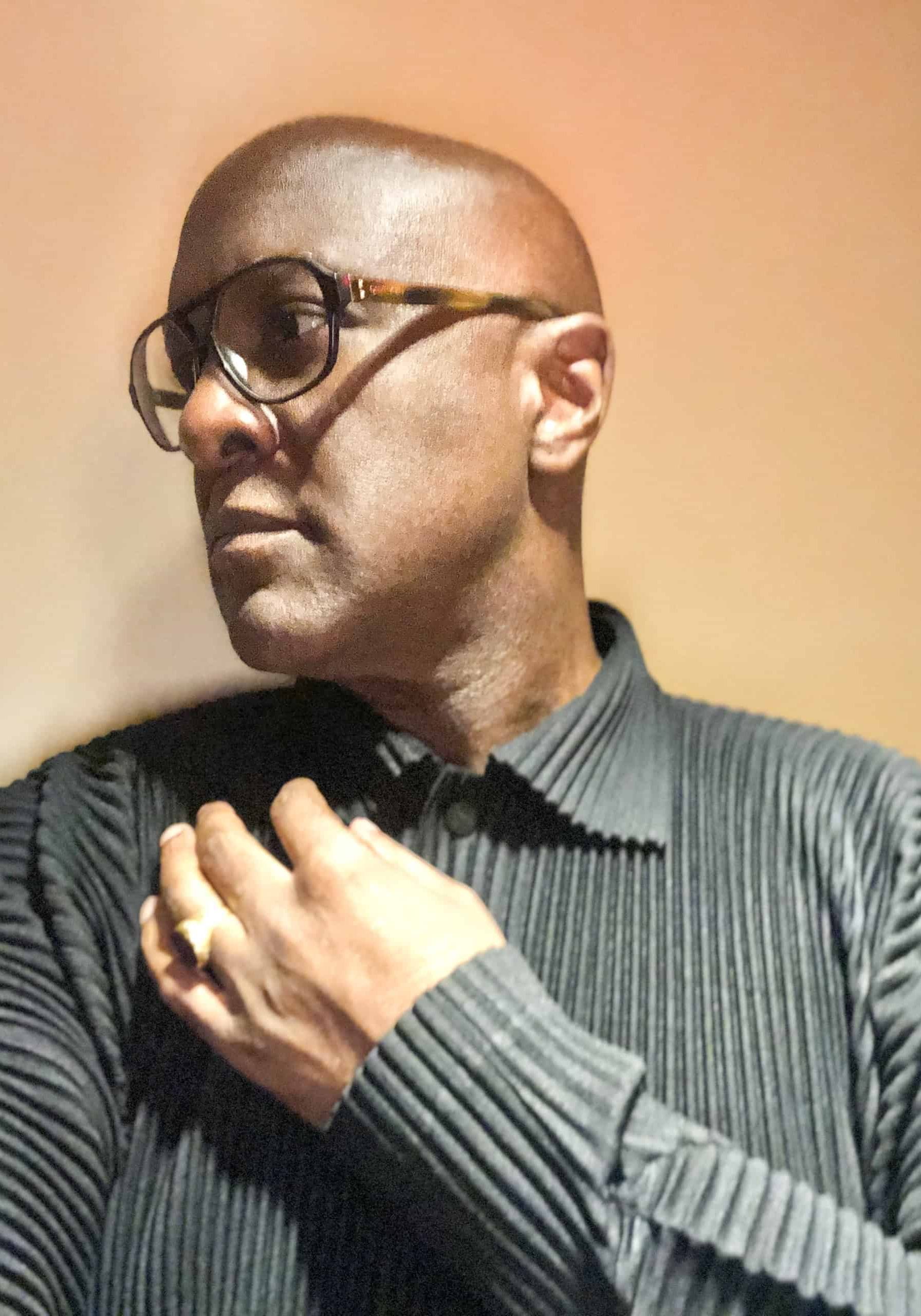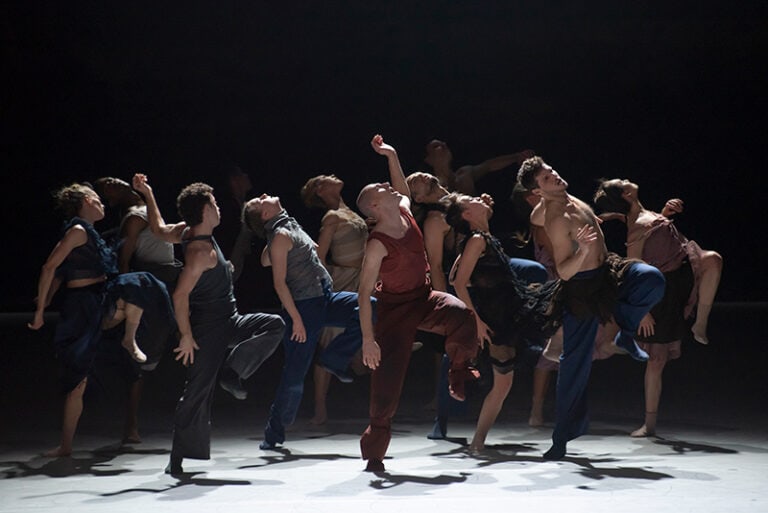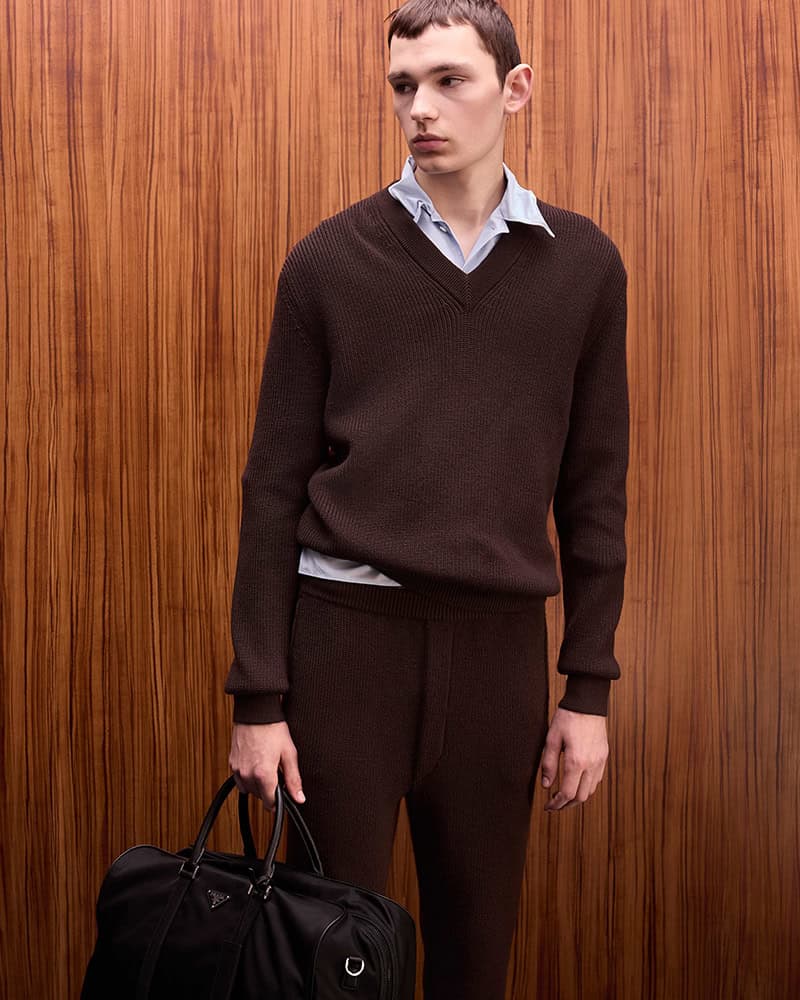
PRADA Men-The Winter’s Tale
Patrick Michael Hughes
PRADA WINTER 2025
The PRADA winter 2025 men’s collection by co-creative directors Miuccia Prada and Raf Simons. Returned to the brand’s foundational strategy of working through contrast and contradiction.
The design approach placed nonchelonce preppy and luxury après active in direct dialogue. Additionally the collection merges casual and formal collapsing day and evening into a single wardrobe logic. Sportswear, workwear and evening wear were recombined prompting a reconsideration of how clothing is classified and used.
A notable British sensibility ran through the collection. Industry reporting links this presence to Paul Surridge. Formerly of Calvin Klein and Burberry, who is now working alongside Simons once again. Surridge and Simons previously collaborated during Simons’s tenure as design director of menswear at Jil Sander. A period marked by precise tailoring and technical achievement.
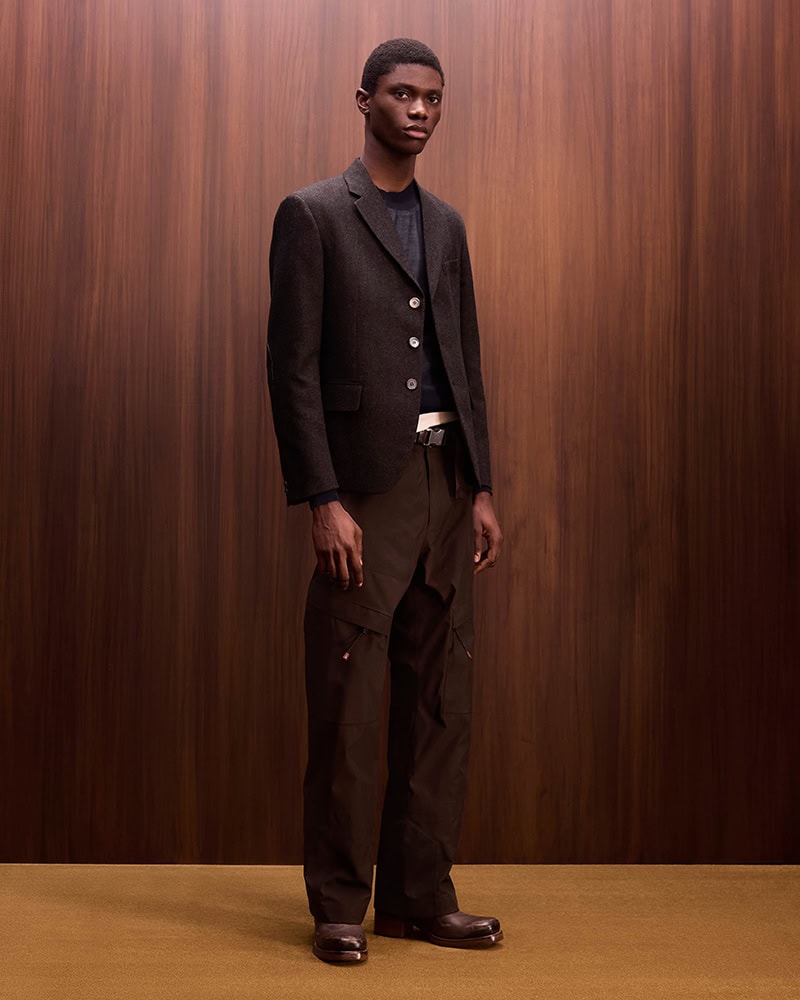

Position
PRADA’s earlier runway message this year addressed “human nature” and “basic instincts” as catalysts for creativity, highlighting “unlearned reactions” and “primitive urges.” By contrast, Winter 2025 is far more measured, edited, muted and aligned with a clear retail strategy.
Since the 1990s, PRADA has embedded performance sportswear into everyday dress, shaping a modern uniform that mixes technical fabrics with classic luxury materials. Because this logic continues, technical fabrics are contrasted with silk and cashmere, reinforcing the house’s position for consumers who are increasingly informed, selective and value oriented.
The PRADA Winter 2025 menswear offer prioritizes classic value and longevity. Elevation is achieved through premium finishes, recognisable PRADA hardware and closures, and refined trimming strategies that support long-term investment and cross season wear. The brand’s merchandising balance is deliberate: pairing expressive, statement driven pieces for social and occasion use with practical, utilitarian garments suited for work and daily activity. This dual model widens market capture by speaking to both the expressive and functional needs of the contemporary menswear customer.
PRADA’s storytelling this season underscores craftsmanship, edit, and coherence. The assortment sits comfortably within the current menswear landscape, where restraint, clarity, and adaptability continue to shape buying behavior.

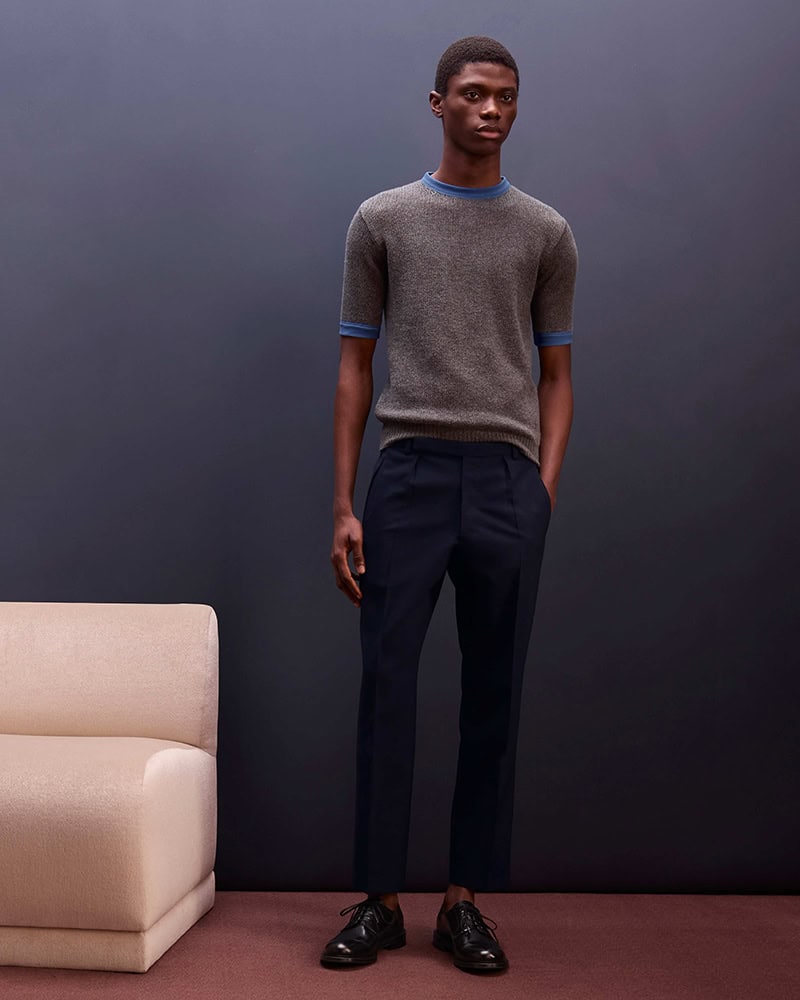

Fashion Summery
This PRADA collection framed dressing as a process rather than a performance. The quiet experimentation that happens inside a wardrobe the trial, error, and mismatch was placed on the runway with purpose. The continued recognition of human imperfection in both runway and seasonal offerings seems to be a moment seeking original generation, in an age of artificial intelligence and algorithmic refinement. Additionally there is a simplicity and reality of the clothing ….”There is a silence of pure innocence. Persuades when speaking fails” (Act II Scene II, The Winter’s Tale)
Materiality and construction supported this idea of transformation. Knitwear was lined to shift volume and silhouette. Uniform codes were softened or disrupted with silk taffeta. Accessories grounded the narrative: boots, brogues, and a central item for the season—the PRADA Explore back pack set an updated direction for men’s luxury technical fabrication goods. An archival Prada logo from the early 20th century re-emerged as the season’s emblem, reinforcing continuity with the house’s origins.
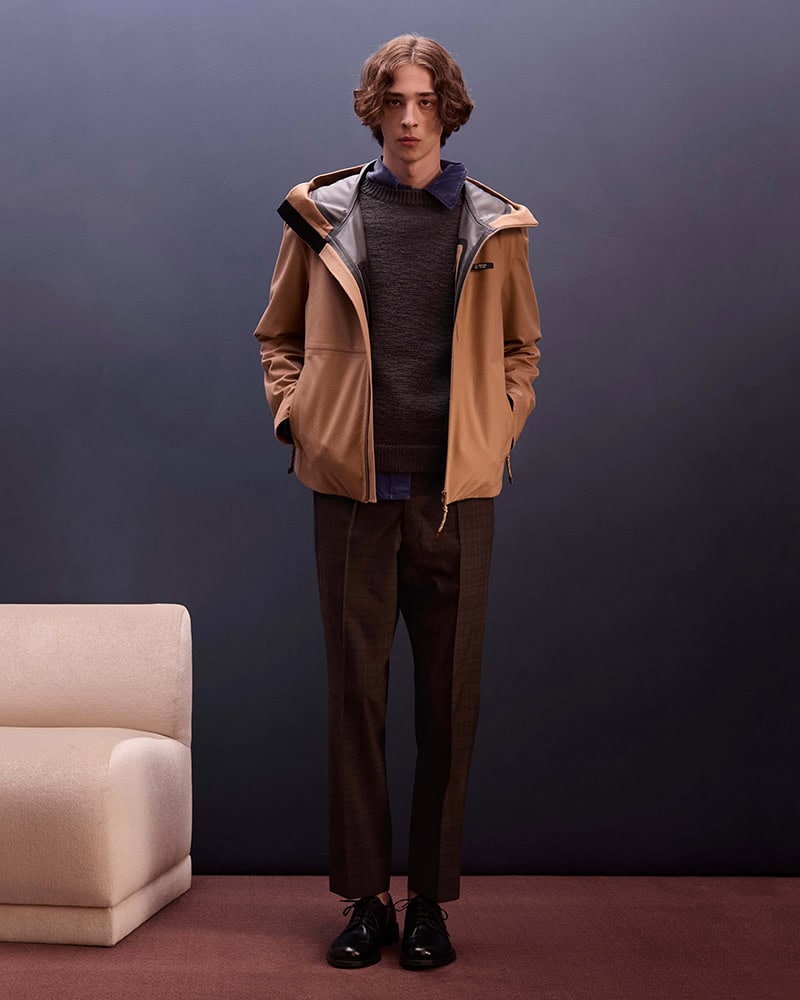



PRADA website
Share this post
Patrick Michael Hughes is a fashion and decorative arts historian. He writes about fashion culture past and present making connections to New York, London and Copenhagen's fashion weeks with an eye toward men's fashion. He joined IRK Magazine as a fashion men's editor during winter of 2017.
He is often cited as a historical source for numerous pieces appearing in the Wall Street Journal, The New York Times, CNN, LVMH, Conde Nast, Highsnobiety and others. His fashion career includes years as a fashion reporter/producer of branded content for the New York local news in the hyper digital sector. Patrick's love of travel and terrain enabled him to becoming an experienced cross-country equestrian intensively riding in a number of locations in South America Scandinavia,The United Kingdom and Germany. However, he is not currently riding, but rather speaking internationally to designers, product development teams, marketing teams and ascending designers in the US, Europe and China.
Following his BA in the History of Art from Manhattanville College in Purchase, New York he later completed graduate studios in exhibition design in New York. it was with the nudge and a conversation in regard to a design assignment interviewing Richard Martin curator of the Costume Institute at the Metropolitan Museum of Art he was encouraged to consider shifting his focus to the decorative arts with a concentration in fashion history and curation.
Patrick completed graduate studies 17th and 18th century French Royal interiors and decoration and 18th century French fashion culture at Musée Les Arts Decoratifs-Musée de Louvre in Paris. Upon his return to New York along with other classes and independent studies in American fashion he earned his MA in the History of Decorative Arts and Design from the Parsons/Cooper Hewitt Design Museum program in New York. His final specialist focus was in 19th century English fashion and interiors with distinction in 20th century American fashion history and design.
Currently, he is an Associate Teaching Professor at Parsons School of Design leading fashion history lecture-studios within the School of Art and Design History and Theory,
Read Next

